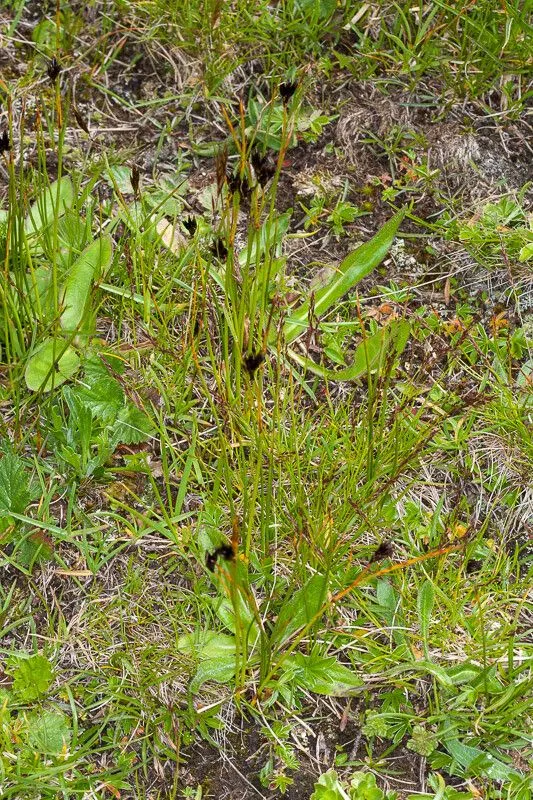
Author: L.
Bibliography: Syst. Nat. ed. 10, 2: 251 (1767)
Year: 1767
Status: accepted
Rank: species
Genus: Juncus
Vegetable: False
Observations: Alps
Jacquin’s rush, scientifically known as Juncus jacquinii, is a perennial plant belonging to the Juncaceae family. This species was first described in detail by Carolus Linnaeus in the tenth edition of his seminal work “Systema Naturae” in 1767. The plant is primarily found in the alpine regions, specifically thriving in the unique environmental conditions of the Alps.
Juncus jacquinii is well-adapted to the rigorous climates and high altitudes common in alpine territories. It exhibits a hardy nature, which is essential for surviving the harsh, often fluctuating temperatures and the relatively short growing season characteristic of high-altitude ecosystems. The plant typically grows in moist, well-drained soils and is often found along streams, wet meadows, and other areas with adequate water supply, which are frequent in the mountainous regions it inhabits.
The structure of Jacquin’s rush is one of its notable features. It generally has a dense clump of cylindrical, green to dark green stems that can reach various heights, depending on the specific conditions of their habitat. The leaves are reduced to sheaths surrounding the base of the stems, which is a common adaptation in many rush species to reduce water loss and survive in their natural settings.
One of the key ecological roles Juncus jacquinii plays is providing erosion control and stabilization in its native environments. The dense root systems of these plants help to bind the soil, reducing the risk of erosion in areas with loose or shifting substrates. Additionally, Jacquin’s rush contributes to the biodiversity of alpine wetland areas, offering habitat and food sources for various insects and small animals.
In summary, Jacquin’s rush (Juncus jacquinii) is a significant and resilient component of the alpine flora, particularly in the Alps. Its adaptation to high-altitude conditions, ecological importance, and distinctive structure make it an interesting subject of study within the plant kingdom.
Deu: gemsen-binse, jacquin-binse, jacquins binse
En: Jacquin’s Rush
De: Gämsen-Binse, Gemsenbinse, Jacquins Binse, Gemsen-Binse, Jacquin-Binse
It: Giunco di Jacquin
: Jacquin’s rush
Taken Jul 19, 2015 by Tela Botanica − Martine MARTHOURET ROBERT (cc-by-sa)
Taken Jul 17, 2019 by Tela Botanica − Marie Portas (cc-by-sa)
Taken Jul 5, 2007 by Martin Bishop (cc-by-sa)
Taken Jul 15, 2012 by Tela Botanica − Yoan MARTIN (cc-by-sa)
Taken Jul 12, 2012 by Tela Botanica − Yoan MARTIN (cc-by-sa)
Taken Jul 16, 2014 by Tela Botanica − Hugues TINGUY (cc-by-sa)
Taken Apr 26, 2016 by Tela Botanica − Bernard SUDAN (cc-by-sa)
Taken Jul 17, 2019 by Tela Botanica − Marie Portas (cc-by-sa)
Taken Jul 5, 2007 by Martin Bishop (cc-by-sa)
Taken Jul 12, 2012 by Tela Botanica − Yoan MARTIN (cc-by-sa)
Taken Jul 5, 2007 by Martin Bishop (cc-by-sa)
Taken Jul 17, 2019 by Tela Botanica − Marie Portas (cc-by-sa)
Taken Jul 2, 2022 by Sara (cc-by-sa)
Taken Jul 3, 2022 by Manuëlle (cc-by-sa)
Taken Jul 15, 2012 by Tela Botanica − Yoan MARTIN (cc-by-sa)
Taken Jul 15, 2012 by Tela Botanica − Yoan MARTIN (cc-by-sa)
Growth form>: Stoloniferous
Growth habit>: Graminoid
Growth rate>: Slow
Ph maximum: 4.5
Ph minimum: 4.0
Light: 9
Atmospheric humidity: 6
Soil nutriments: 1
Family: Myrtaceae Author: (F.Muell.) K.D.Hill & L.A.S.Johnson Bibliography: Telopea 6: 402 (1995) Year: 1995 Status:…
Family: Rubiaceae Author: Pierre ex A.Froehner Bibliography: Notizbl. Bot. Gart. Berlin-Dahlem 1: 237 (1897) Year:…
Family: Sapindaceae Author: Koidz. Bibliography: J. Coll. Sci. Imp. Univ. Tokyo 32(1): 38 (1911) Year:…
Family: Asteraceae Author: A.Gray Bibliography: Pacif. Railr. Rep.: 107 (1857) Year: 1857 Status: accepted Rank:…
Family: Fabaceae Author: Medik. Bibliography: Vorles. Churpfälz. Phys.-Ökon. Ges. 2: 398 (1787) Year: 1787 Status:…
Family: Aspleniaceae Author: (Cav.) Alston Bibliography: Bull. Misc. Inform. Kew 1932: 309 (1932) Year: 1932…